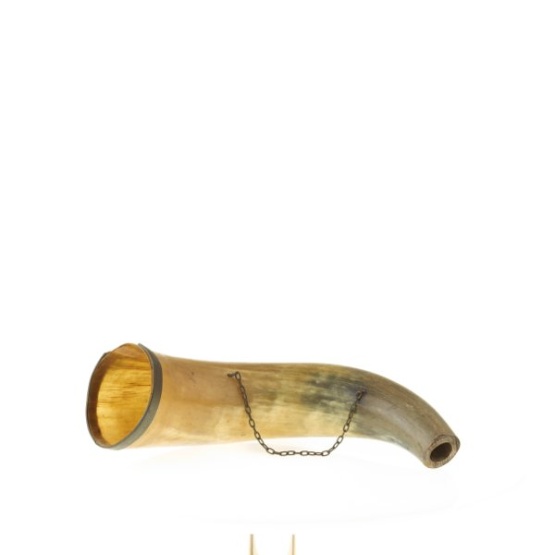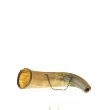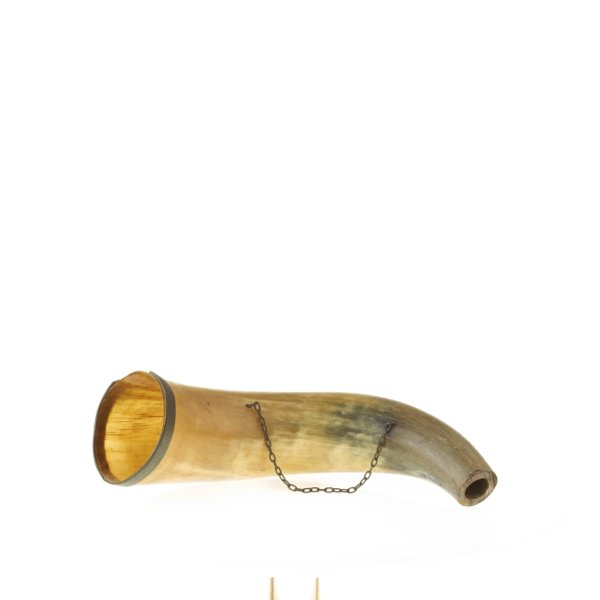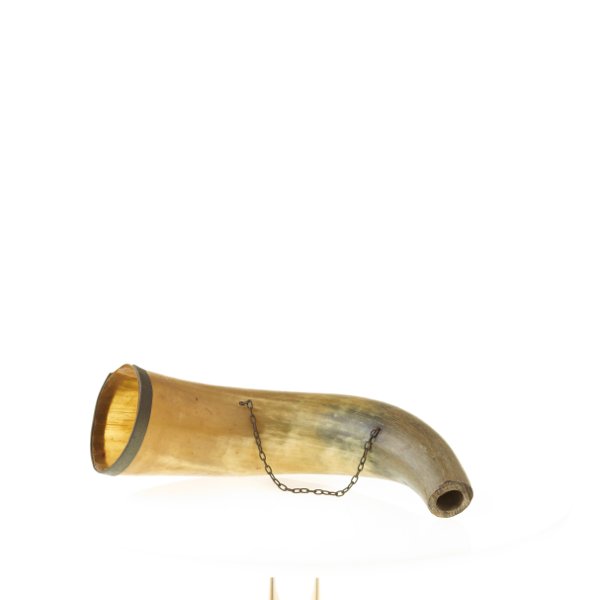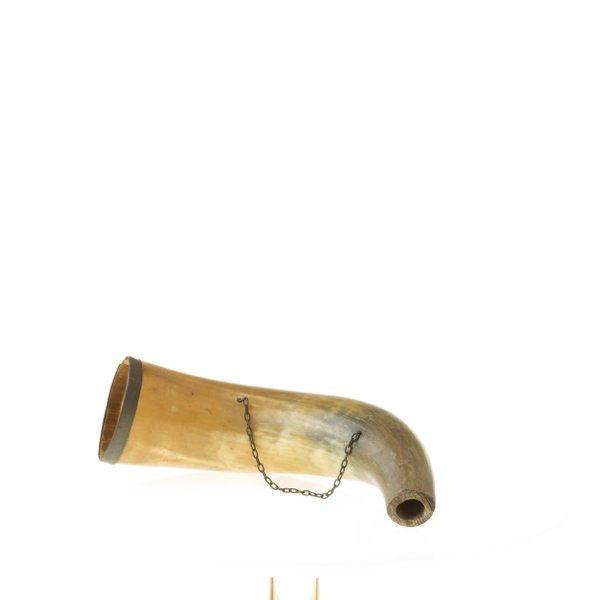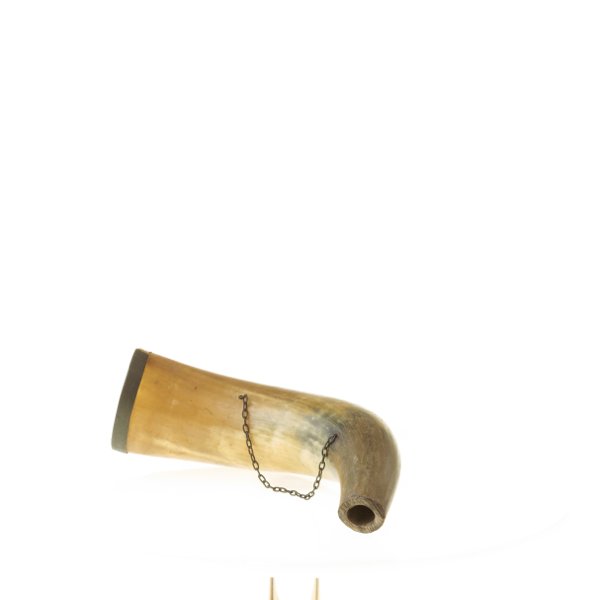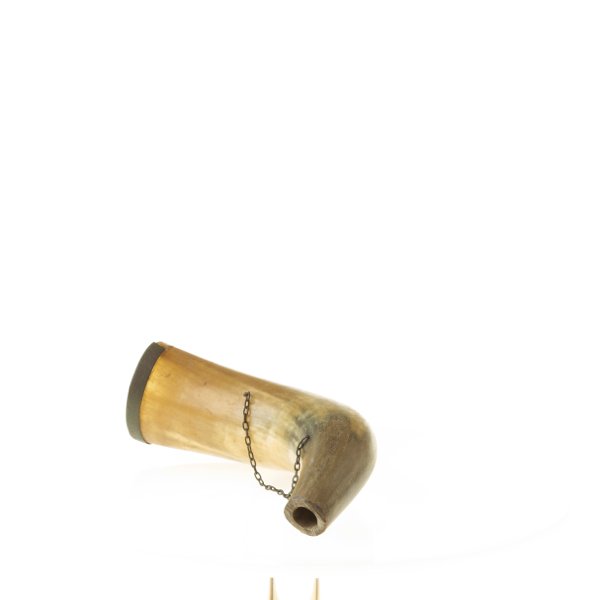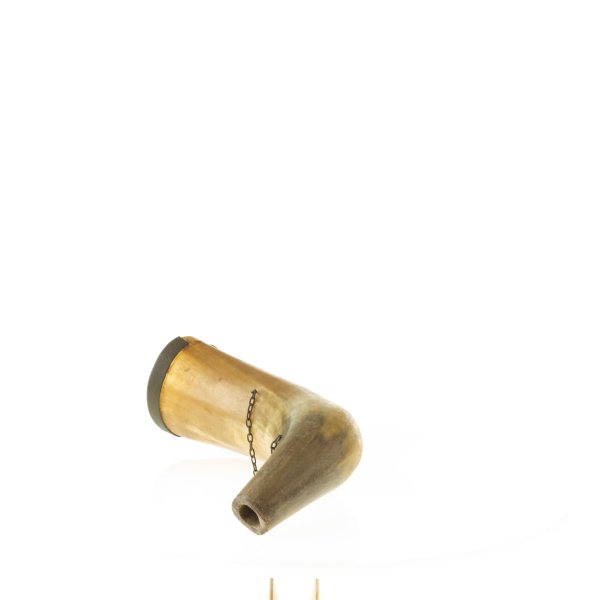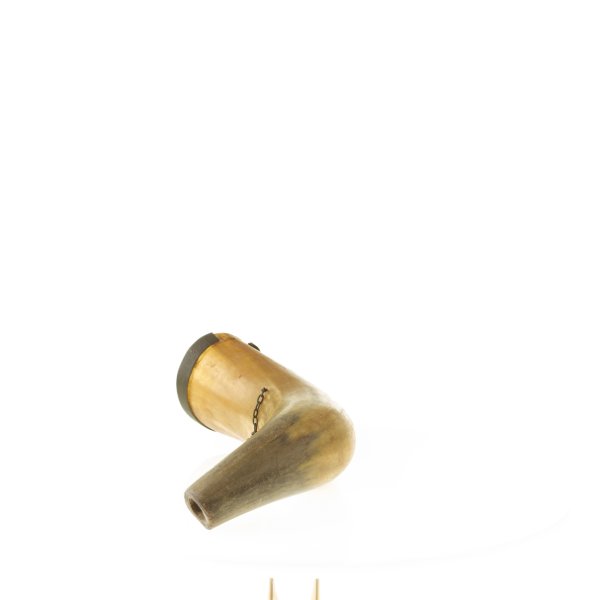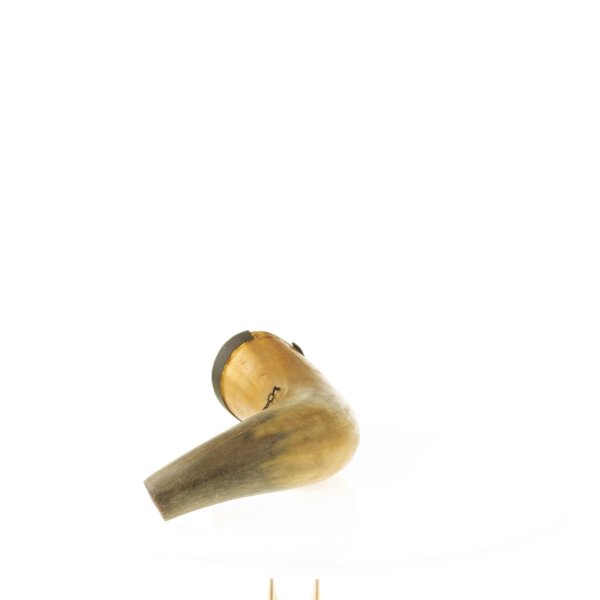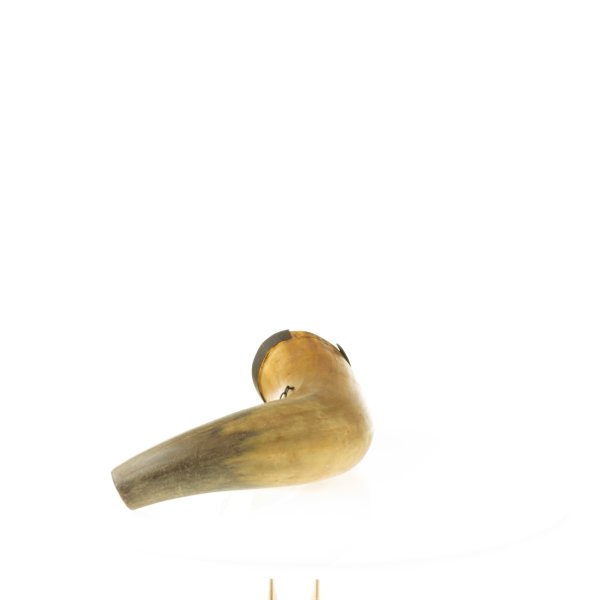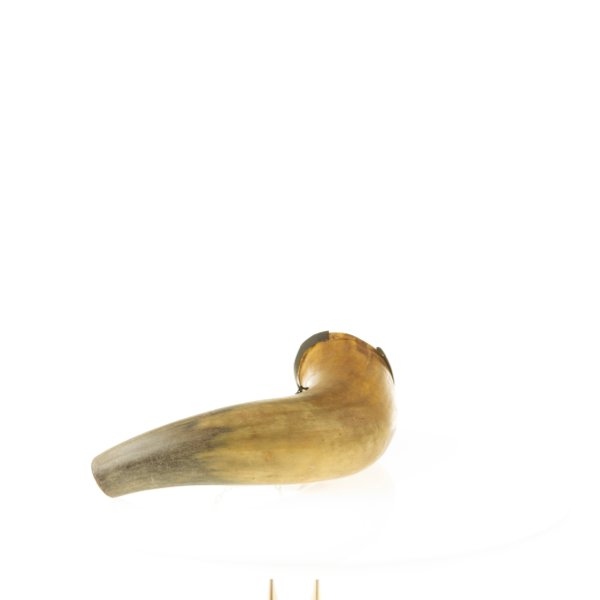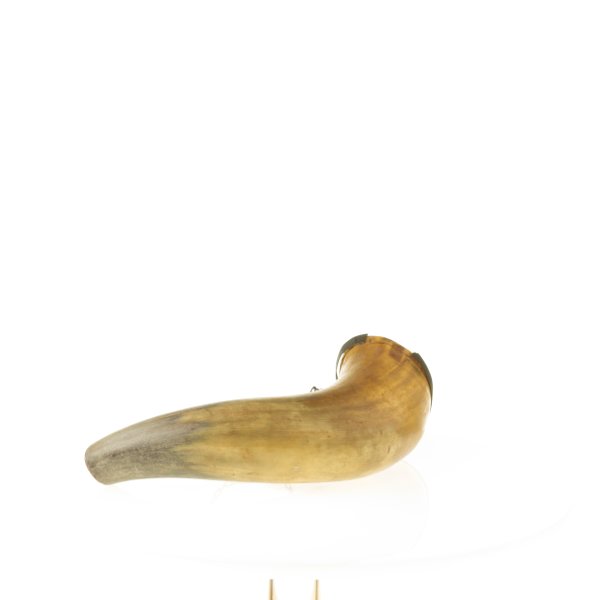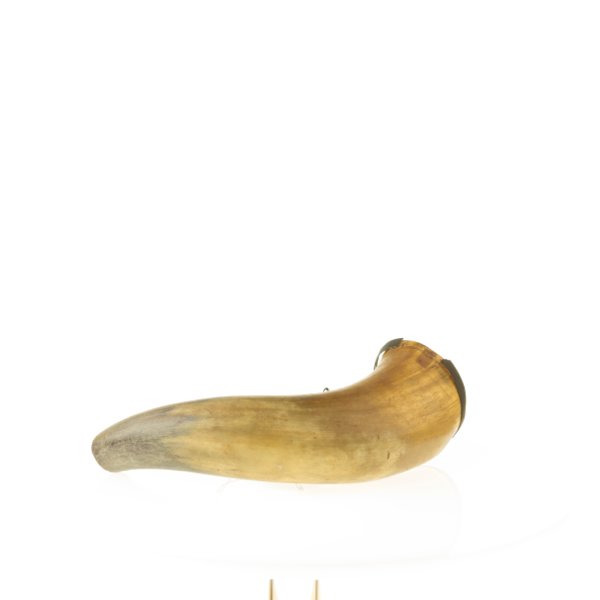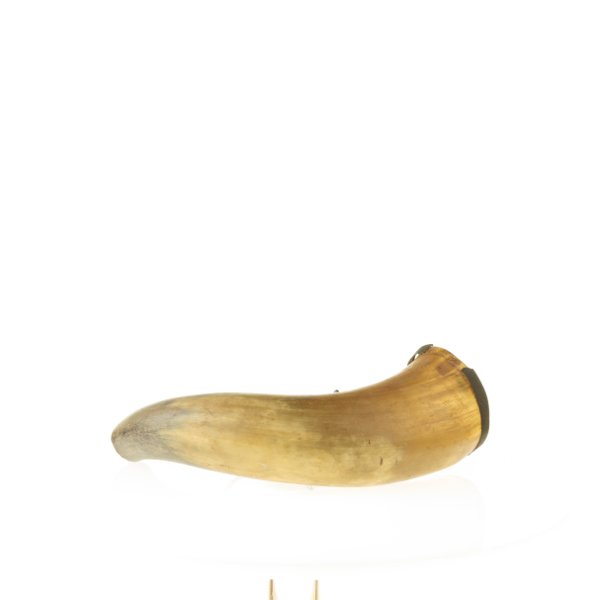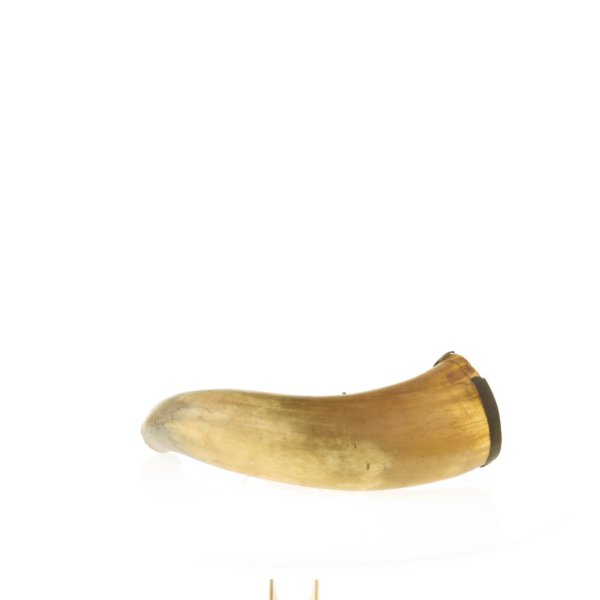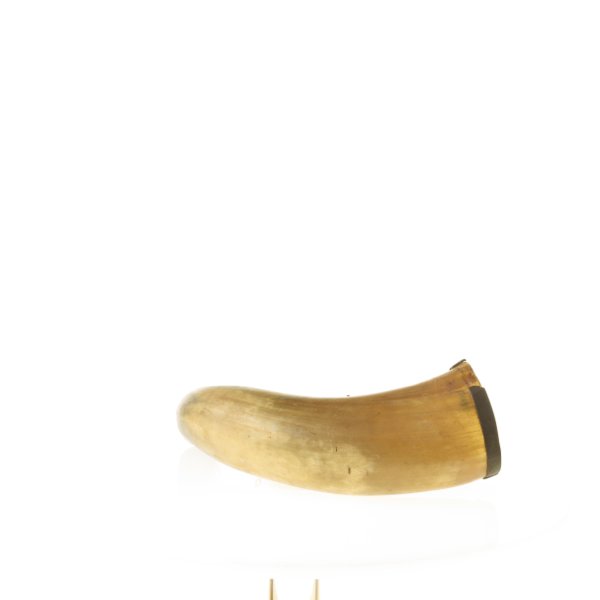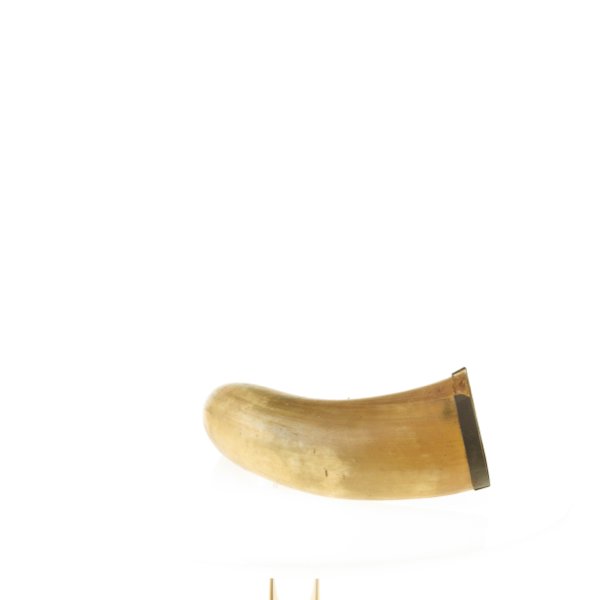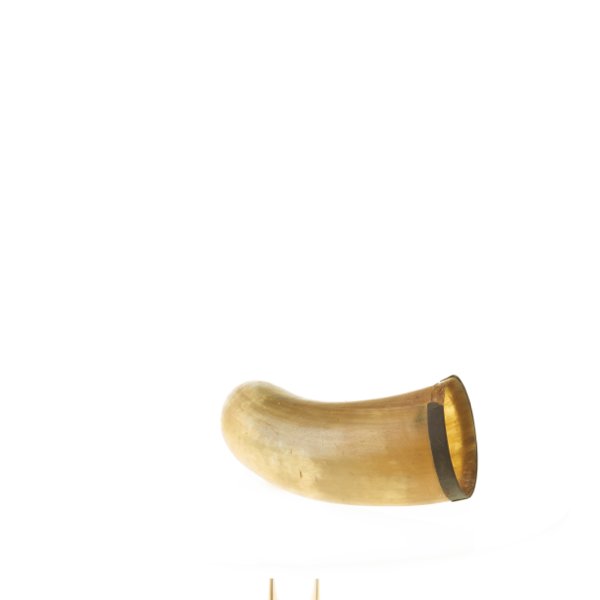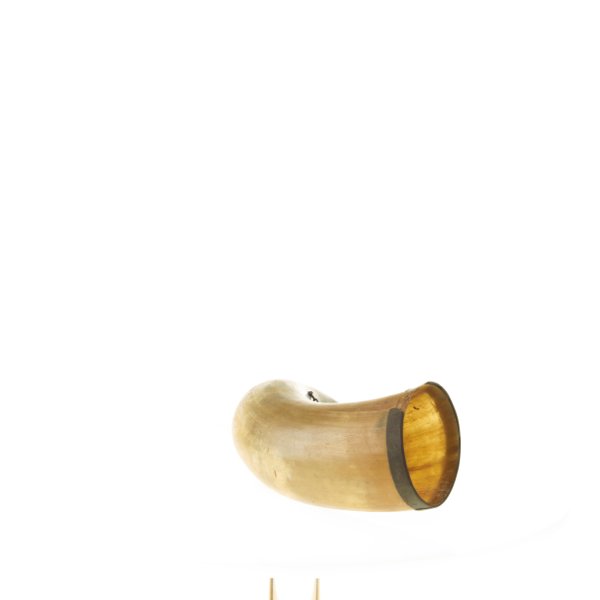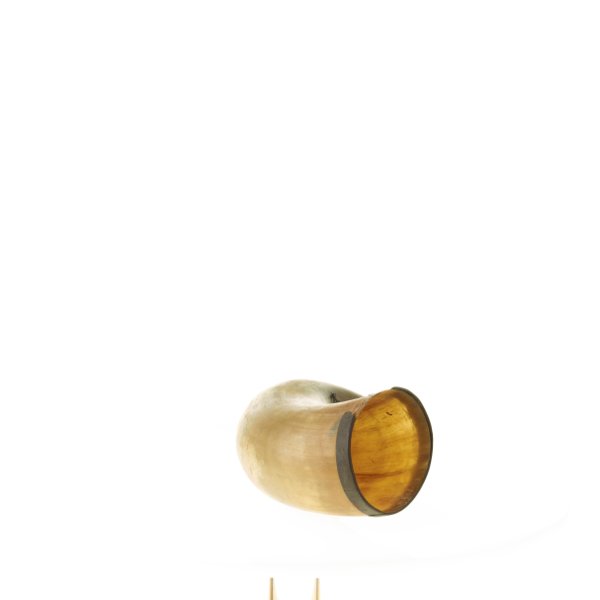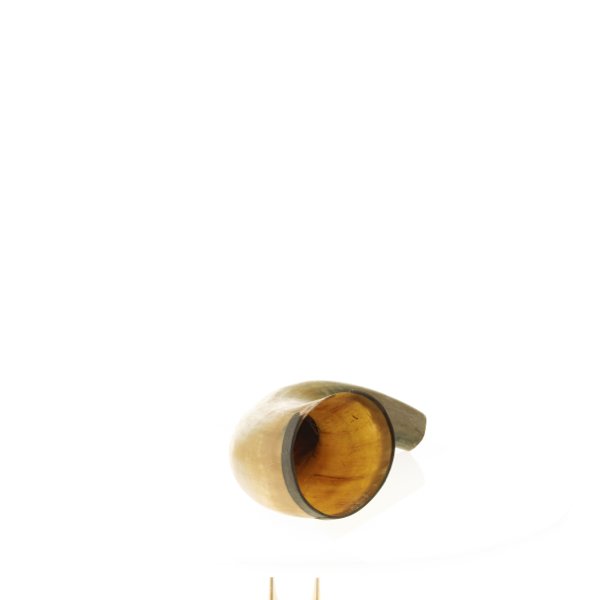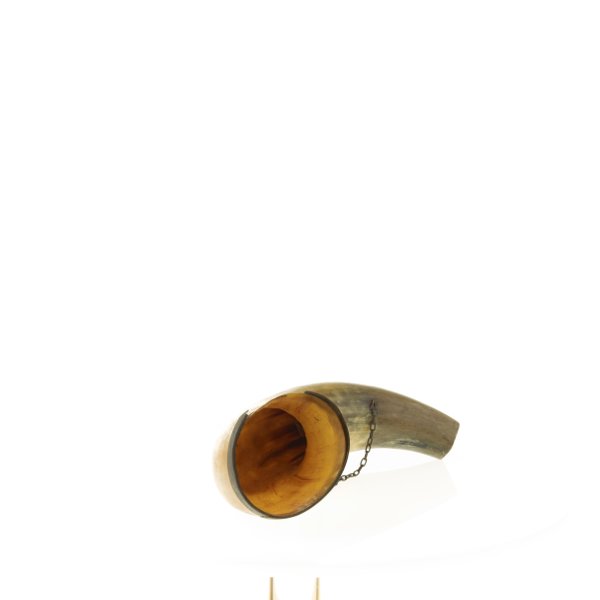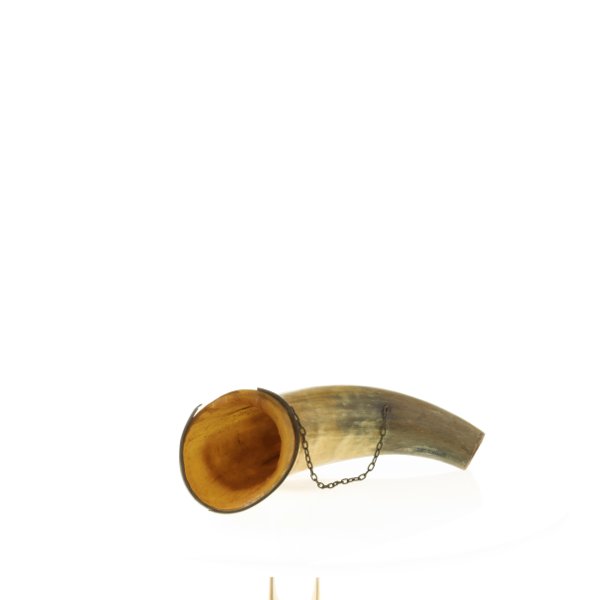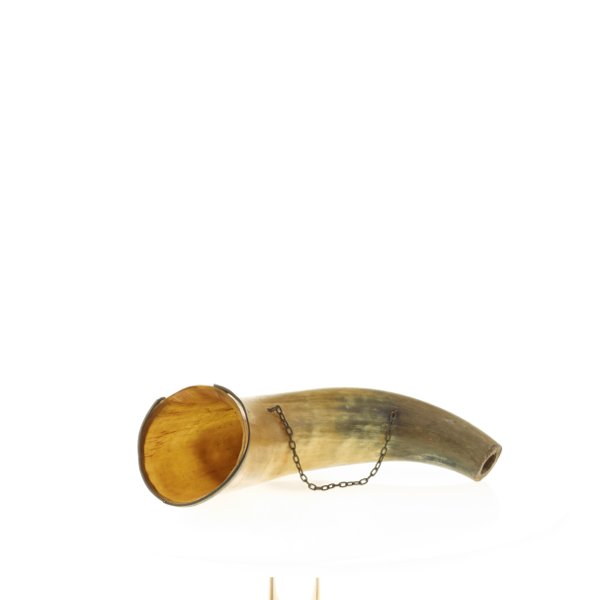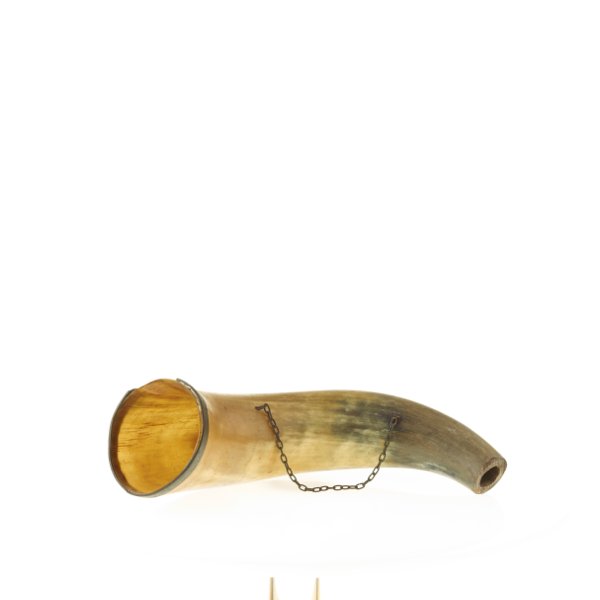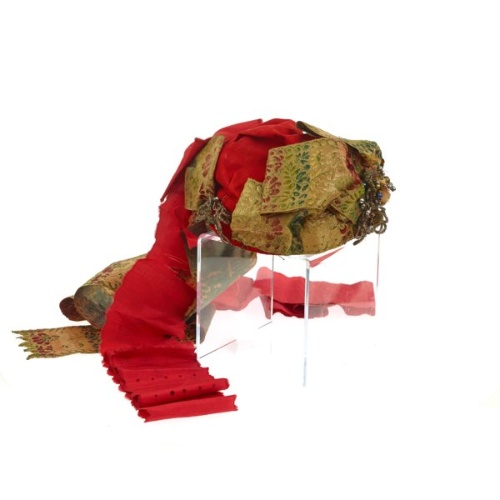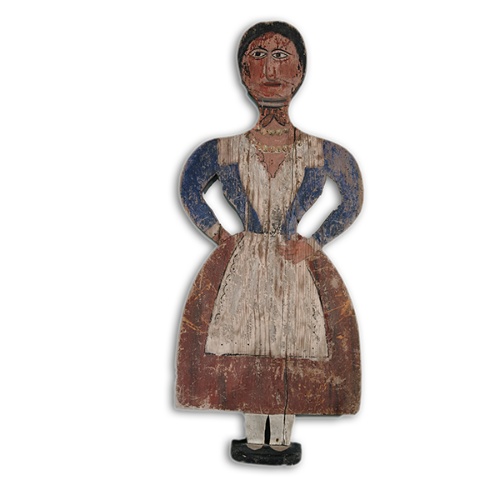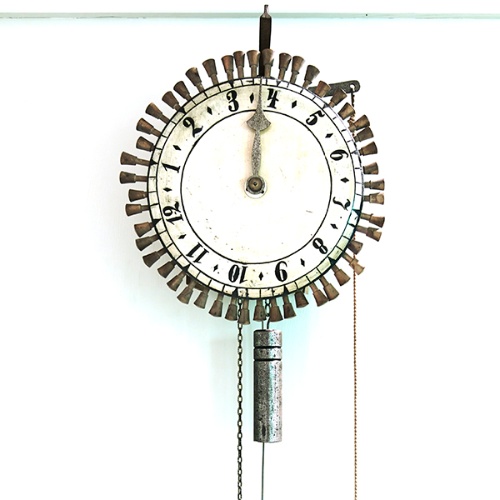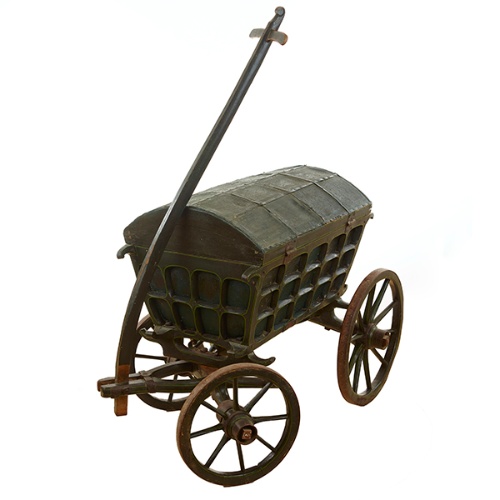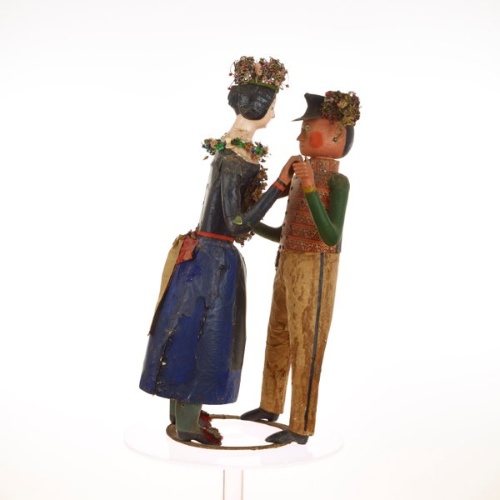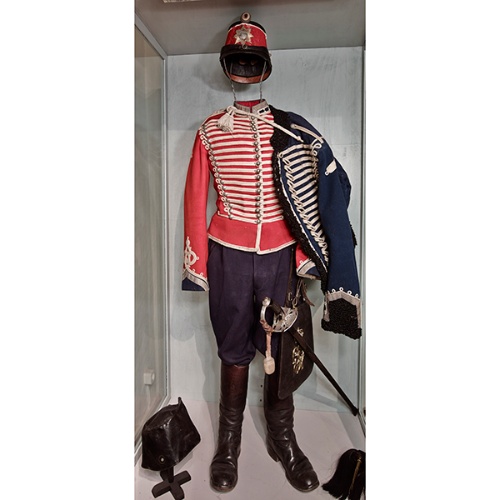Mayor’s horn
- cattle horn
- around 1900
- length: approx. 30 cm
Mayor’s horns were the alarm horns in villages. They emitted a dull sound similar to that from a foghorn. Most of the horns still in existence today were made from sawn cow horns that were also dated and adorned with carved symbols. They were the symbols of grandeur of the local village mayors. In a few known cases a mayor’s horn also hung in a visible place on the right side of the farmhouse gable to show guests the prestige of the house. Mayor’s horns were evidence of the status of the office of a village mayor in the 18th and 19th century, which was generally passed down together with farmstead number 1 (hide I.) within the family.
The mayor also had to announce ducal instructions and their performance. In some villages in the principality of Ratzeburg he also had to hold the inferior courts and entertain the judges. The mayors were entitled to additional free income from the village estate for providing these services. Upon the death of a predecessor, or when the farmstead was transferred to the son, a new mayor had to take the mayoral oath and henceforth ensure the best for the village and the landlords.
Text: O. B.
